“The difference between fiction and reality is that fiction has to make sense” – Tom Clancy
In the most simple terms, conjoined twins can be defined as 2 babies who are physically connected to each other, at the time of their birth. Conjoined twins are also known as – “Siamese Twins” because the first babies (which brought the entire attention of the world on this unfortunate condition) were born in Siam (modern day Thailand), in a small fishing village 60 miles from Bangkok. This is their story.
Chang and Eng Bunker Siamese twins - were born in the early 19th century (in 1811) at a time when medical science, was still at its infancy and the acceptable moral codes of society, were much less forgiving. Born as Jun and In, they owed their life to their mother, who untwisted the ligament, connecting the babies above their waist, thus saving their lives. She reportedly did not face any difficulty during the birth, and recollected her experience, as being similar to the birth of her other children. Her difficulties however increased tremendously, when her husband died, while the children were still very young. The only way they could help their mother was to help her in selling duck eggs in the village.
To ensure that her children could live the best life under the circumstances, their mother encouraged the boys to exercise, so the joining ligament could become longer. This advice actually worked and the ligament grew more than 5 inches, which enabled the twins to lead a near normal life. The brothers could run, swim and even handle a boat. Life was not easy, but a known atmosphere of the village certainly helped their situation. However, all that would change when destiny made them move away to a far-off country, on the other side of the world, after a chance encounter with a stranger.
A British merchant Robert Hunter was responsible for introducing the world’s first Siamese twins (at least the first to be documented so thoroughly) to the western community. As a trusted business associate of the Siamese government, he enjoyed considerable freedom & liberty in his movement. A chance encounter with the cousins, whom he saw swimming in the Menam river, set in motion a set of unforeseen events, which would change the life of twins forever.
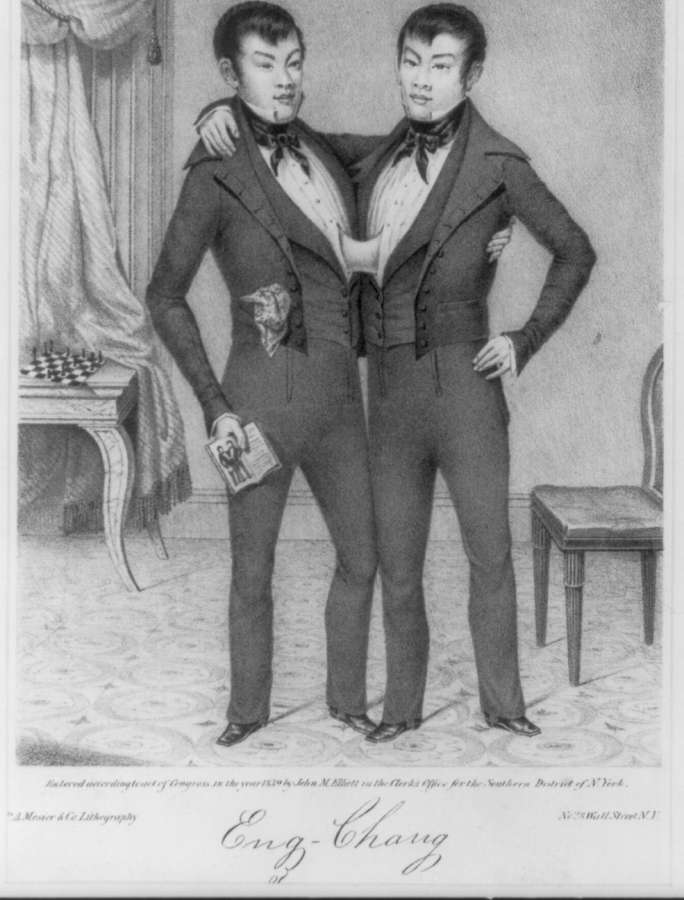
After initial confusion of mistaking the twins, for some unknown strange animal, the businessman that he was, Robert Hunter decided to make a handsome profit of this accidental encounter. He decided that if he could bring the twins to America, he could financially benefit from the people, who would be intrigued to see this marvel of nature. Although it took him 5 years, however, with help of an American sea captain – Abel Coffin, he was finally successful in departing for the United States in 1829, along with the 17-year-old twins. The twin’s mother received $500 as compensation for sending away her children, for a period of 30 months.
The twins arrived in Boston on 16th August 1829, where they were exhibited to public & also examined by the physicians, both in US and Britain. The examining doctors carried various tests on the twins. When a pin was pricked in the middle of the connecting ligament, both the twins felt the pain, on deviating from the center only the twin on that side felt that pain. If one brother experienced sour taste or tickling, the other twin could feel it too. However, words whispered to a twin’s ear or a pinch on his arm, couldn’t be appreciated by the other.
The general population was also no less intrigued, by the twins. They paid a decent amount of money to see the twins attired in Oriental clothing performing somersaults, running, lifting weights & other physical feats. After a short stintin the United States, they also toured major cities of the United Kingdom & Ireland, doing shows for the public, before returning to New York in March 1831. Not had they earned just a decent amount of money during these tours, but had also picked up a good reading & conversational skill in the English language.
The appearance of the Siamese twins in the western scenario did create some rather illogical but unfortunate situations too. A woman in Kentucky, who had given birth to a dead conjoined twin, attributed her misfortune to, looking at the twin’s representation in newspapers, around the time she conceived. Even in Europe, the French authorities had banned the twin’s entry into the country in 1831, fearing the effects of the men in the country’s women.
After almost 10 years of coming to the United States, and innumerable public performances later, the brothers decided to settle down. For this reason, they purchased 150 acres of land, in October 1839, in Traphill, in northeastern Wilkes County, North Carolina. Soon they became naturalized citizens of the country & eminent members of the local rural community. The “Bunker” surname they had acquired, belonged to another person, with whom they had a chance encounter. They believed that this surname would help themselves to settle down as proper southern gentlemen.
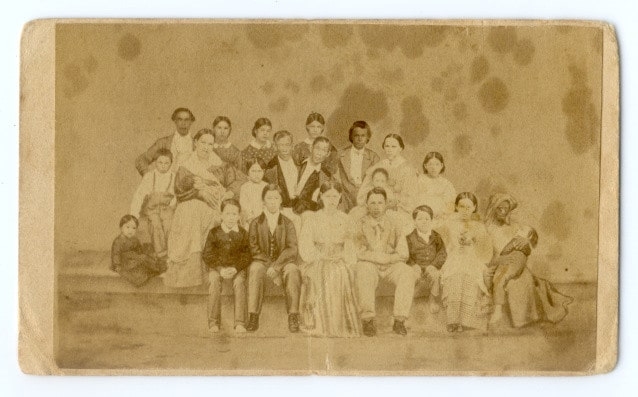
By 1840s the world’s first Siamese twins had very radically changed their life. Nor were they just prosperous, having third most valuable property in the county, but had several housekeepers and slaves to help them manage their property and plantation. Their fluent English, voting in the elections and continued newspaper coverage established them not just as wealthy slaveholders with property rights but also as American national celebrities.
Chang had fallen in love with Adelaide (daughter of a neighboring farmer – David Yates), who also reciprocated his feelings. However, the question of who would marry Eng remained, as getting another woman married to the twin brother, was not an easy proposition. So, an attempt was made to convince Sarah, sister of Adelaide to marry the twin brother – Eng. Initially, she was reluctant, however, after 5 years of persuasion, Sarah agreed to marry Eng. The marriage ceremony of the twins to the Yates sisters took place in Yates’s living room in 1843, the ceremony being conducted by a Baptist preacher.
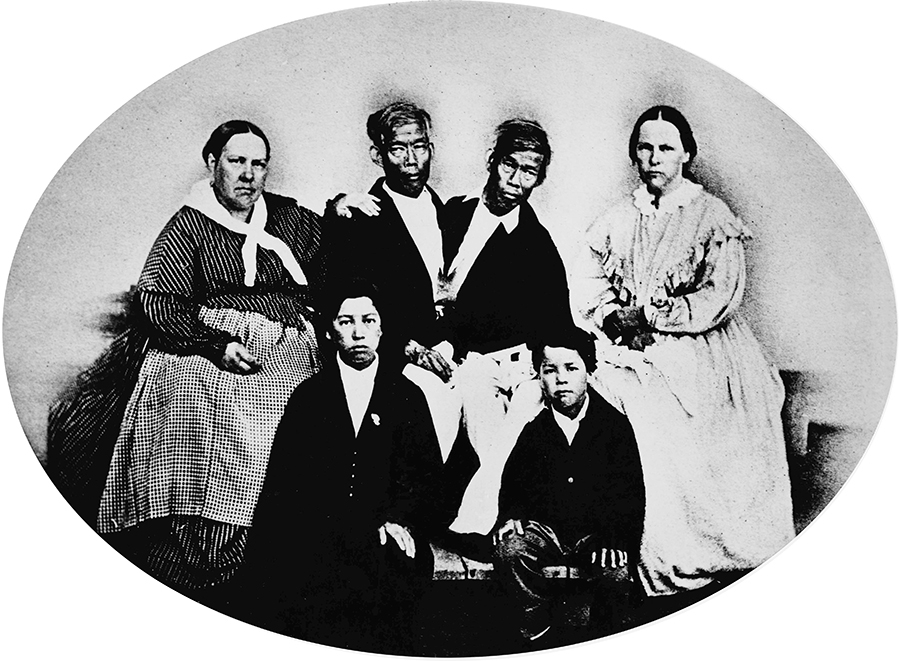
Here it would be important to mention that Chang and Eng Bunker had contemplated drastic measures, to ensure that they could live a married life, like all other normal couples. They had traveled to Philadelphia, a few months before their marriage, contemplating a surgery that would separate them. They knew that these kinds of surgical procedures, could be even fatal for them, but the wish to have a normal life made them desperate. It was a timely persuasion on part of the sisters, whorealizing the gravity of the situation, rushed in at the last moment before the surgery, and made the brothers change their mind.
The details of the conjugal relationship between the twin brothers & their wives are not known, but the brother’s first children were born just 6 days apart in 1844. A later pair was also born with a gap of 8 days only. During their entire life, the brothers went on to father 21 children – 10 by Chang and 11 by Eng. Although initially, the 2 couples lived under the same roof, later the wives began to argue between themselves, forcing the brothers to set up 2 separate homes for the 2 families. The brothers themselves, split each week between the two.
Chang and Eng Bunker family had to face tremendous prejudices of the society from the beginning. As the news of the impending marriage became known to the public, some men smashed the windows at the Yates’s residence. Some neighbors also threatened to burn the crops at Yates’s farm, if he did not control his daughters. Local media reports of the marriage were full of sarcasm and made fun of the married couples.
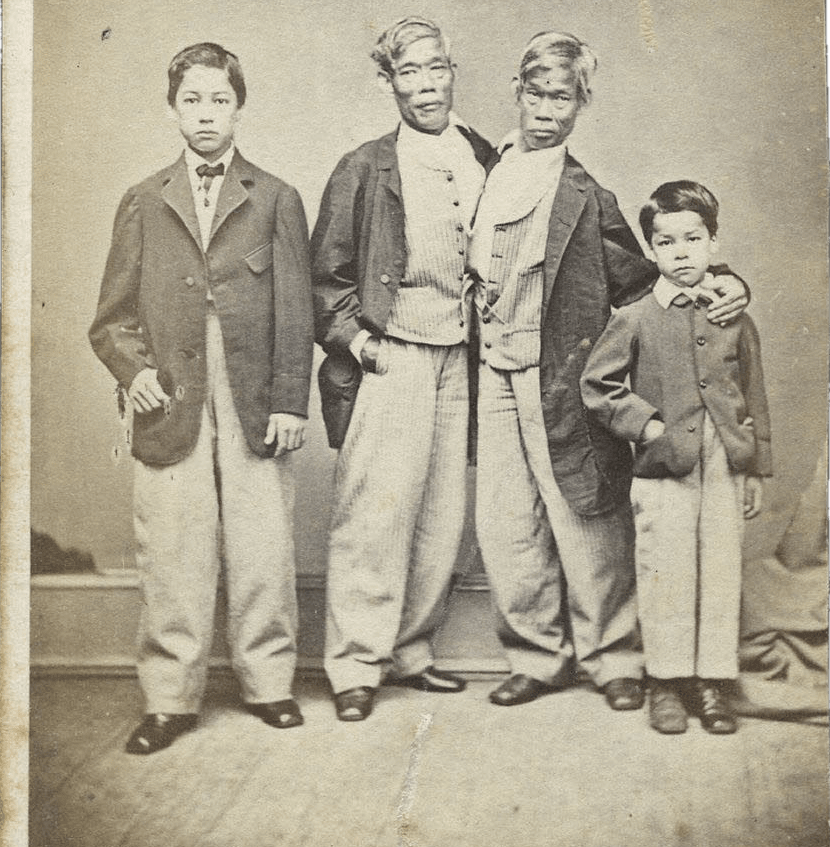
The newspapers in the north were very severely critical of the marriage & termed it as appalling practice, encouraged by the sin of slavery prevalent in the south. The relationship between the twins & their wives were misconstrued as a perversion and severely criticized. In later part of their life, as the brother’s fortunes dwindled and they were forced to start touring exhibitions, many people harshly reacted to them & even boycotted them. As they traveled through England, the British press once again described them as too disgusting, to be husband or fathers.
The Civil War had caused much damage to many families of the United States and the Bunker family were not left untouched. Their finances were in ruins and their helping hands – their slaves were free. Left without too many options, they again started touring, to generate an income. However, the northern people were not very receptive to the twins, who had been slaveholders. The newspapers also wrote negative reviews about them. In spite of the adverse conditions, the brother continued with their touring, sympathetically portraying themselves as old men with families, who have fallen on harsh times.
During their final years, the twin brothers made a trip to Britain in 1868-69, along with their daughters. In 1870 they went to Germany & Russia, along with their sons. On the journey back home, Chang’s right side (towards Eng) became paralyzed after suffering from a stroke. Eng did his best to nurse back his brother to a relatively healthier condition. Chang had his right leg tied up in a sling and & used a crutch and his brother’s arm to move around.
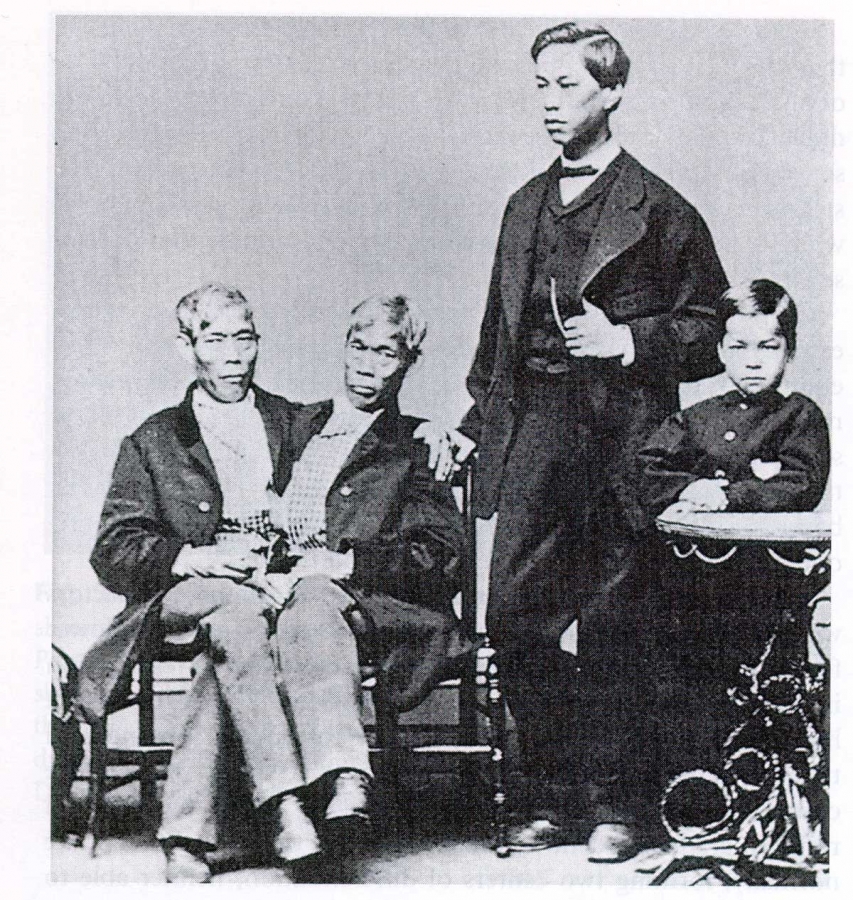
In January 1874, when the brothers were 62 years old, Chang developed bronchitis; which soon aggravated in severity & he died 2 days later. Eng after waking up from sleep discovered that his brother had died. He was shocked and said “Then I am going!”. 2 and ½ hours after Chang’s death, Eng also passed away. The post-mortem examination proved that Chang had died of a cerebral clot, but his brother had died of fright, as the thought of him being attached to his dead brother mortally terrified him.
Post mortem examination of the brothers demonstrated that they shared a liver & their connecting ligament was so complex, that they would have never survived the surgical procedure to separate them. In spite of heavy odds stacked against them, from the beginning of their life, they fought bravely against their destiny, to lead a relatively productive life, extending 6 decades.
It was not just congenital abnormality, that the brothers had to battle their entire lives, but racial prejudices & also misplaced notions of morality, which made life difficult for them. Irrespective of physical ailments & deformities, every human has the right to lead a life of dignity, have a family and raise children. Unfortunately, the moral fabric of the 19th century made many people act against them, wrongly believing that they were safe guarding the social values. Although the world has changed a lot since then, the life of Chang and Eng Bunker Siamese twins is an example of the famous quote of T.S. Eliot – “Most of the evil in this world is done by people with good intentions.”